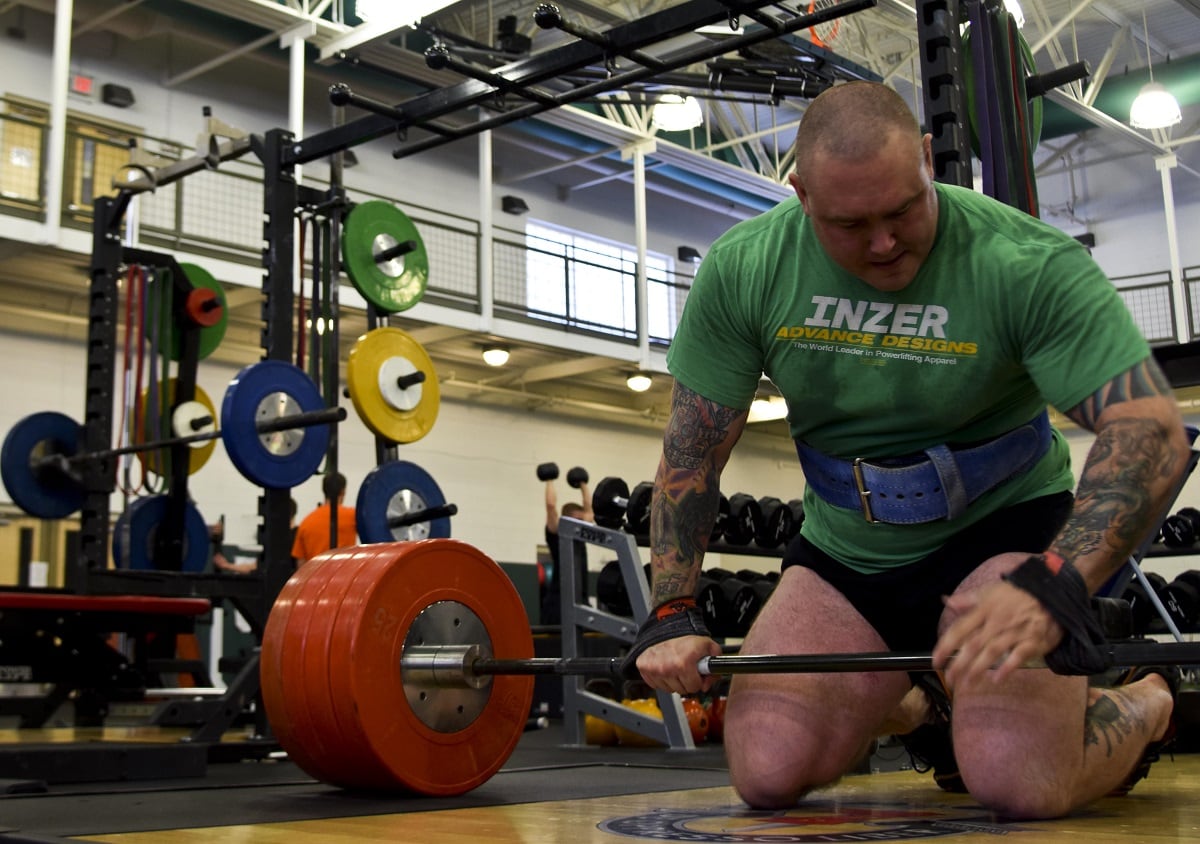Many service members looking to add strength are going about it from the wrong direction.
Literally.
“What we see in the mirror is what we work on,” said Army Maj. Donald Bigham, an elite-level powerlifter and chief of human performance at the Human Performance Integrative Office at Fort Benning, Georgia. “We’re doing our chests, we’re doing our biceps, we’re doing our quads, we’re putting ourselves in a position that [ignores] our posterior chain, which is what allows for physical dominance.”
Military Times spoke with Bigham and other competitive powerlifters in uniform to get some tips on getting stronger — whether it’s part of a New Year’s fitness resolution or a plan of attack to take on an upcoming fitness test. Some of their best advice:
1. Posterior plan. So, how would Bigham — the Army’s 2016 male athlete of the year after winning four gold medals at that year’s International Powerlifting Federation Raw Powerlifting Championship — recommend shaking up your workout?
“If I could change one thing in the gym, it would be to cut out so much anterior work,” he said. “Cut out the bench press on Mondays, the ‘bis and tris’ on Tuesdays and the 100,000 abdominals on Wednesdays.”
Instead, Bigham suggested a 180-degree rotation. Functional strength will come from exercises targeting the glutes, hamstrings and the rest of the posterior chain, he said. Biceps curls will help with what troops see in the mirror, but won’t help during ruck marches.
Bigham weighs in around 180 pounds. His in-competition squat tops 600 pounds. The 45-year-old has been a competitive lifter since 1991, when he was introduced to the sport as an enlisted Marine serving in Okinawa, Japan.
RELATED
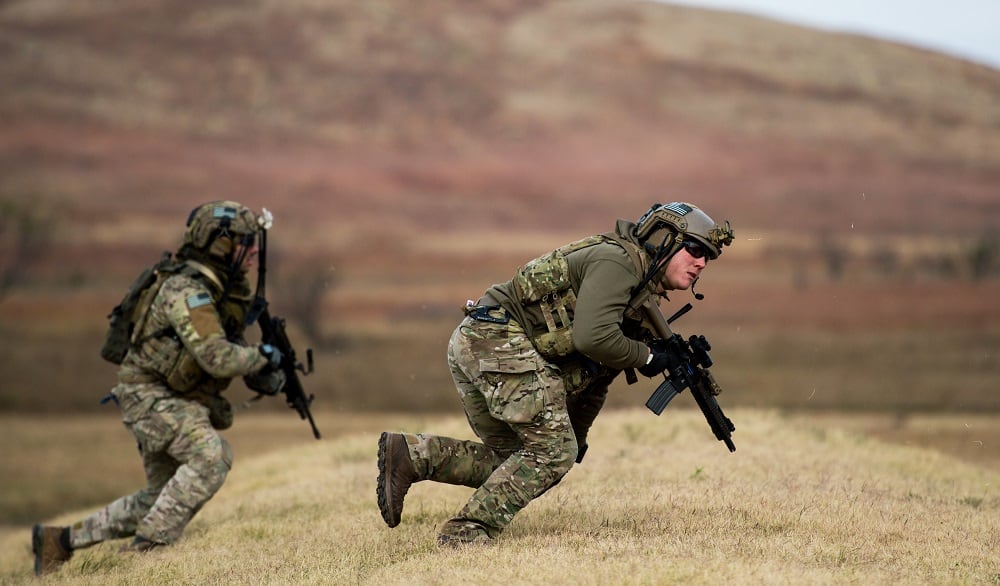
2. Power trio. Not surprisingly, the trio of powerlifters we spoke with advocated for the three lifts — squat, deadlift and bench press — that make up powerlifting competitions.
But it’s not just out of loyalty or personal focus, said Army Staff Sgt. Brad Arbic, an intelligence analyst with 7th Special Forces Group whose 766-pound deadlift in a November event in Las Vegas set a record for his age and weight class.
The three core lifts “really encapsulate all of the musculature,” said Arbic, 35, who weighs in around 300 pounds but can pass the Army’s tape test thanks in part to a 22-inch neck. They also direct focus away from areas that might not need it.
“You’ll see guys putting a lot of attention on very small muscles,” Arbic said. “For example, biceps. Biceps are a very, very small muscle in comparison to the other muscles in your body, but they probably receive the preponderance of attention.”
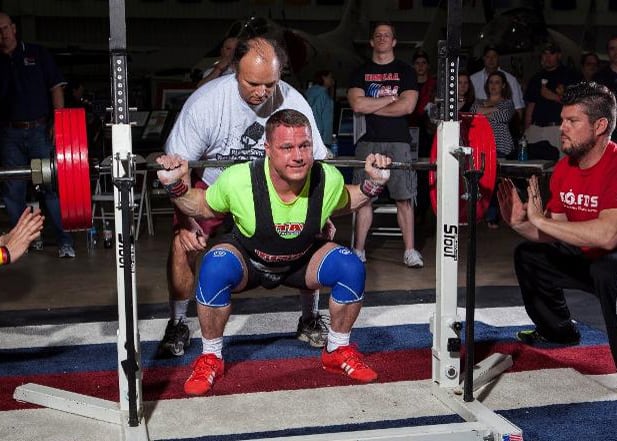
3. Go slow. Before the Marine Corps sent her to Okinawa as a military policeman, 20-year-old Lance Cpl. Mckenzie Curtis already had international travel experience as a member of the U.S. junior worlds powerlifting team that competed in Prague in 2015. She took second in her weight class, and though she gave up the sport (and lost 30 pounds or so) when she joined the Marines, she’s recently picked it back up.
Her approach to adding muscle: Don’t take shortcuts, and don’t expect big leaps in performance.
“Going up gradually each week may not seem like much, but in the long run you will see results,” said Curtis, who competes in the 84-kilogram (181-pound) class but said she may drop to 158 pounds as her lifting career continues.
She builds power by adding five pounds per week to low-repetition, high-effort sessions on the core lifts: three sets, five reps each for squat and deadlift, five-by-five for bench. Too much to add? Go smaller if you must, but keep going.
“My coach actually made special plates that allowed me to go up 2.5 pounds a week,” Curtis said. “He’s a welder.”
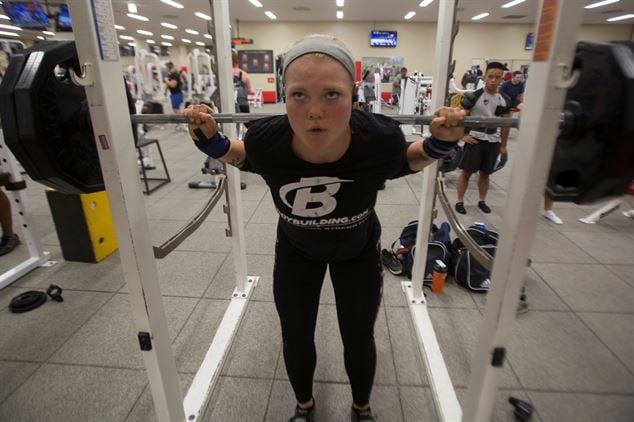
4. Be flexible. Bigham isn’t big on single-joint exercises — they may help define a targeted muscle group, but they’re not reflective of the multi-muscle movements required of service members in the field.
“We don’t move on fixed objects,” said Bigham, whose gold-medal collection includes wins at events hosted by weightlifting icons Arnold Schwarzenegger and Lee Haney. “So if [service members] can learn to move weight in space — I don’t care if it’s a kettlebell, a dumbbell, a barbell — at the end of the day, they’re going to be a better tactical athlete. They’re going to be able to complete that last 100 yards with success.”
Already on the kettlebell bandwagon? Bigham suggests trying to keep the ball in space, rather than resting it on your wrist or forearm, for an additional stabilization workout.
5. Be versatile. The squat, deadlift and bench may provide a stellar core workout, but that doesn’t mean you can limit your fitness regimen to those exercises, or any other group of lifts.
Curtis recently completed her first half-marathon and mixes in multiple visits to the StairMaster with her lifting routine. Arbic clocked a 15:50 on his most recent two-mile run. Bigham said a typical 20- to 25-hour training week should include four to eight hours of active recovery work, which could involve anything from stretching to a brisk walk.
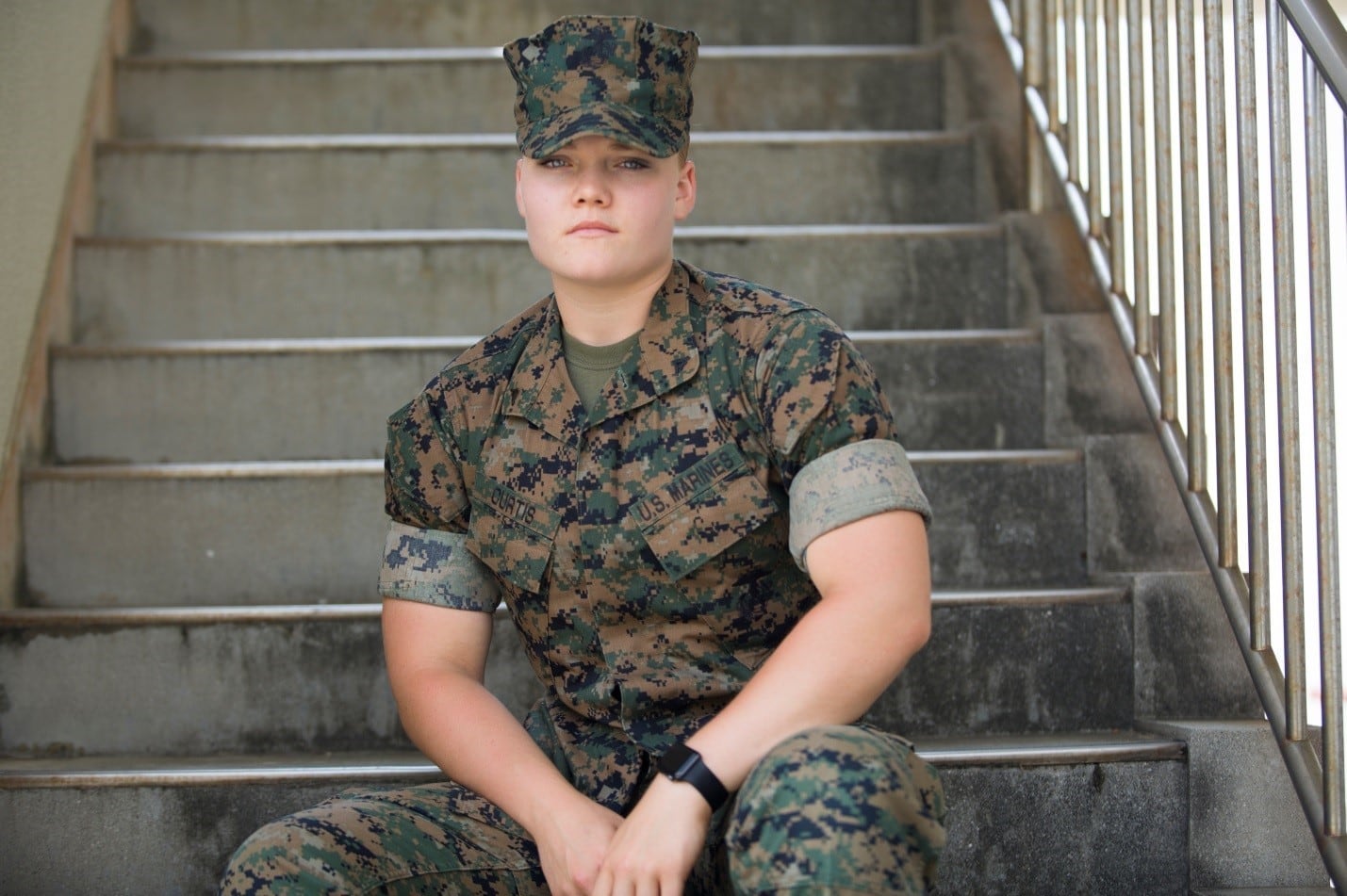
6. Don’t ignore stop signs. “You’ve got to understand your pain scale from zero to 10,” Bigham said. “Anything above a three in training, we don’t do … because now we’re deteriorating. We’re taking away from that movement pattern. We can stay under three and do those exercises, it can still be a benefit for us.”
Smart lifting can build strength and help address lingering injuries; Arbic said the pain from an early-career back injury sustained during an airborne operation has dropped drastically thanks in part to his workout routine.
And while he may not favor single-joint exercises for building overall strength, Bigham said they have great value for troops working through injuries. Targeting a weakened area gives the lifter a greater sense of what progress is being made, what parts of his form are being affected and, most importantly, a clear line on what’s causing any pain.
Beyond injury, there are other reasons to put on the brakes.
“The only thing worse than not training at all is overtraining,” Arbic said. “You put yourself in a position of being overtrained, you increase your potential for injury exponentially.”
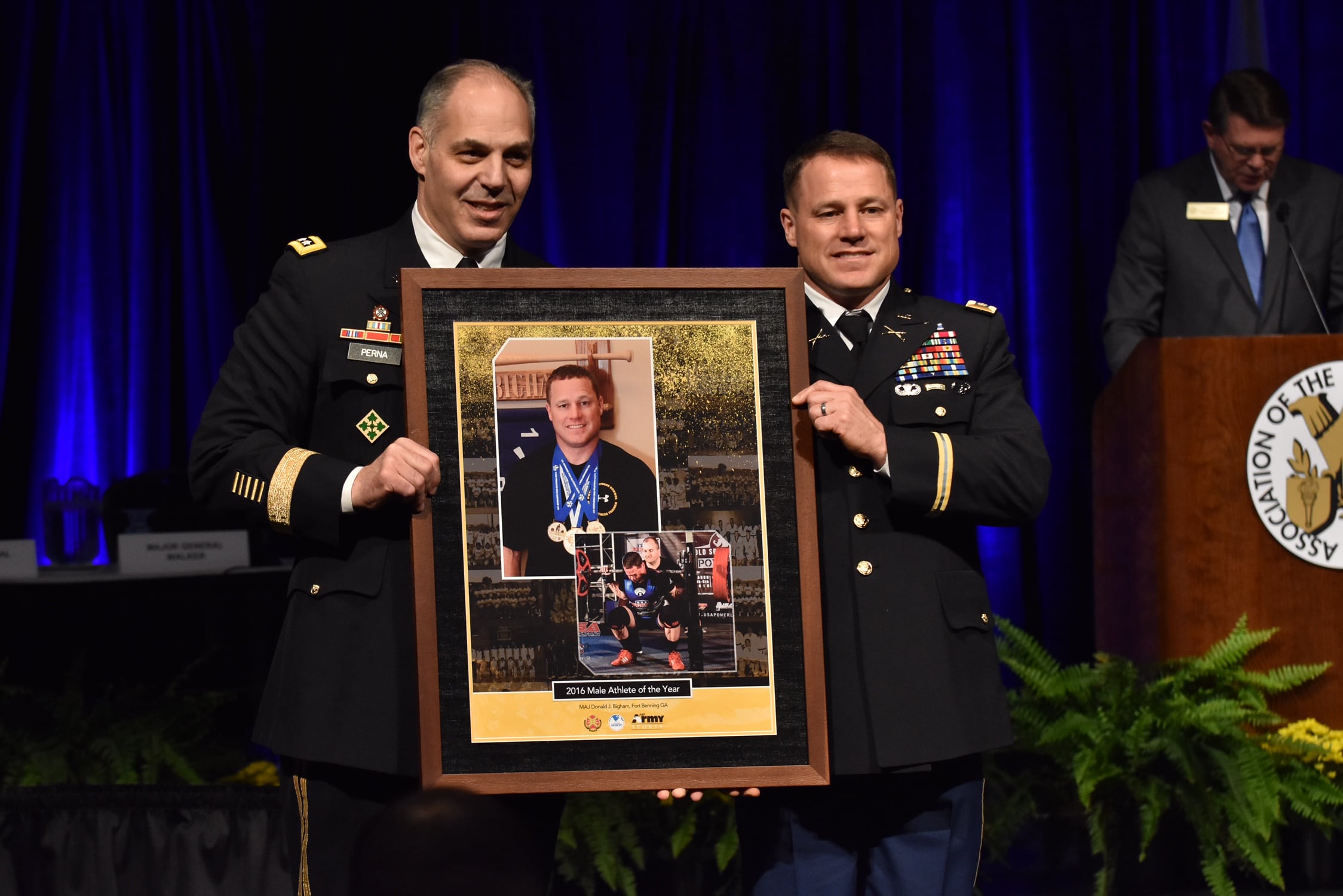
7. Know your fuel. All three lifters stressed the importance of proteins when it comes to building muscle. Bigham recommended between 1.5 and 1.9 grams of protein for every kilogram of body weight — that might mean 175 grams or more of protein a day, so don’t count on a daily steak (60 or so grams for a 9-ounce meal) to check the box.
Arbic leans toward tuna, while Curtis is a fan of protein bars. All three lifters stressed that dietary needs will vary widely based on the individual and the fitness goal; Arbic suggested learning as much as you can about your resting metabolic rate and other factors before you dive in on a new diet plan.
“You have to understand how much you’re burning” before you can start building strength, the 6-foot-2 staff sergeant said, “and then you have to take in excess.”
RELATED

8. Stay still. Don’t be the lifter at the gym who is moving everything … except the bar.
“You see somebody benching, their feet are moving around, their body’s flopping around, there’s all this extra movement,” Arbic said. “That’s not helping them generate the force required to push the weight. … You’re essentially bleeding energy.”
Stop shuffling your feet and “plant yourself to the floor,” said Arbic, who restarted his competitive powerlifting career in 2015 after earning a world title in 2003 as a 21-year-old. “Set your position and hold it.”
9. Ask. Arbic’s build, and the number of plates he uses, can draw some questions from fellow lifters.
“They’ll always preface it with, ‘I don’t bench 500 pounds, but …’ ” he said. “And I’m like, ‘Dude, your max to you is the same as my max to me. It feels the same. The only thing that separates you and me is time.’ ”
He started a YouTube channel with videos that address some basic weightlifting techniques and concerns.
Curtis suggested YouTube as a good starting point for those seeking weight-room tips or interested in breaking bad habits.
“I see it a lot: People not squatting low enough, bouncing their reps on the bench off their chest, and deadlifting with complete back bending over,” she said. “Watch videos. Ask fellow lifters for advice. Don’t be discouraged.”
Kevin Lilley is the features editor of Military Times.
